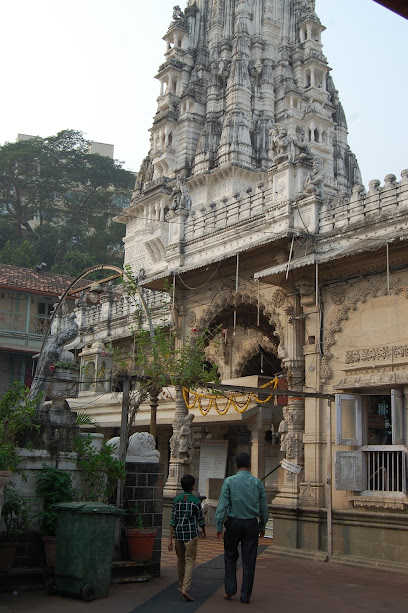India. Babulnath Temple The Temple of Shiva Ling and Kumira.
Babulnath Temple
It was perhaps the first Indian temple that I visited. When approaching the temple, we were met by flower sellers and it was very beautiful. Incredibly bright pink lotus flowers just begged for canvas. Before entering, we took off our shoes as expected and entered the sanctuary barefoot. It was very pleasant, the marble floors were cool, and touching them with bare feet was like an outlandish ritual.
Babulnath Temple The Temple of Shiva Ling and Kumira was consecrated in the 12th century by the then Hindu Raja of Bhimdev.
Linga, (liṅgaṃ means sign, mark, sign) - in ancient Indian mythology and some currents of Hinduism, it is a symbol of the divine generating force. The most widespread in Shaivism, as the worship of the Lingam (the symbol of Shiva) and the female symbol "Yoni" (the symbol of the shakti-female side) of Shiva in its various manifestations - Parvati, Kali and others.
However, some areas of Shaivism - mainly Lingayats - use Lingam without Yoni in their practice.
As a ritual sculpture, it is a vertically placed cylinder with a rounded or hemispherical top, usually rising from the Yoni - the base in the form of a circle, less often in the form of a square. On the sides of the cylinder, sculptural images of the gods can be depicted.
It is believed that the image of "Linga-Yoni-murti" symbolizes the indivisible unity of the male (Shiva) and female (Shiva's shakti) principles, from the combination of which life comes.
The temple of the 12th century was destroyed and lost its then appearance.
The temple sculptures were rediscovered between 1700 and 1780.
First, 5 original figures were found. They were Shiva, Linga, Ganesha, Hanuman and Parvati.
Of these, the first four are in the temple. The fifth figure of Pravati was immersed in the sea, it was taken out already in the 18th century.
The new temple was built in 1780.
The temple was built on land owned by the Parsi community.
There were five graves of Parsis here. The Parsee community at that time was very opposed to the construction of the temple. This resistance continued until the end of 1800 and was only decided in court in favour of the temple.
The Parsis are a people of Iranian origin living in western India. They are an ethnoreligious community professing Zoroastrianism. This is the most literate and wealthy community of all the peoples of India. Religious beliefs are fundamental to the life of the Parsis. Many of their customs are very different from traditional Indian ones.
The construction of the Babulnath temple was patronized by Hindu merchants and the main Gujarati community. The Greater Temple was built in 1890 with contributions from Gujarati merchants and Maharaja Sayajirao Gaikwad of Baroda. The existing structure of the temple dates back to 1890, the height of the temple was significant when built in 1890, but a lightning strike in 1960 damaged the spire, which significantly reduced the height of the present temple. Until the 1980s Babulnath Temple was one of the tallest in the city of Mumbai.
Babulnath Temple
Це був мабуть перший індійський храм, котрий я відвідала. При підході до храму нас зустрічали продавці квітів, і це було дуже гарно. Неймовірно яскраво-рожеві квіти лотоса просто просилися на полотно. Перед входом ми як належить зняли взуття і босими увійшли до святилища. Це було дуже приємно, мармурові підлоги були прохолодними, а дотик до них босими ступнями був схожий на дивовижний ритуал.
Babulnath Temple Храм Шиви Лінга та Кумири був освячений у 12 столітті тодішнім індуїстським Раджою Bhimdev.
Лінга, (liṅgaṃ означає знак, мітка, ознака) - в давньоіндійській міфології та деяких течіях індуїзму це символ божественної чинності. Найбільшого поширення набув шиваизме, як поклоніння Лінгаму (символу Шиви) і жіночому символу «Йоні» (символу шакти -жіночого боку) Шиви у її проявах — Парваті, Калі та інших.
Проте деякі напрями шиваїзму — переважно лінгаяти — у своїй практиці використовують Лінгам без Йоні.
Як ритуальна скульптура являє собою вертикально поставлений циліндр із закругленою або напівсферичною вершиною, що зазвичай піднімається з Йоні — основи у вигляді кола, рідше у вигляді квадрата. З боків циліндра можуть бути зображені скульптурні образи богів.
Вважається, що образ «Лінга-Йоні-мурті» символізує собою неподільну єдність чоловічого (Шива) та жіночого (шакті Шиви) початків, від з'єднання яких походить життя.
Храм 12 століття був зруйнований і втратив свій тодішній вигляд.
Скульптури храму були виявлені в період 1700 по 1780.
Спочатку було знайдено 5 оригінальних фігур. Це були Шива, Лінга, Ганеш, Хануман і Парваті.
З них перші чотири перебувають у храмі. П'ята фігура Праваті була занурена в море, її дістали вже у 18 столітті.
Новий храм було збудовано до 1780 року.
Храм був побудований на землі парсів, що належала громаді.
Тут було п'ять поховань парсів. Спільнота парсів на той час дуже чинила опір будівництву храму. Цей опір тривало до кінця 1800 р. і було вирішено лише в судовому порядку на користь храму.
Парси - народ іранського походження, який проживає на заході Індії. Є етнорелігійною спільнотою, що сповідує зороастризм. Це найписьменніша і найбагатша громада з усіх народів Індії. Основним моментом у житті парсів є релігійні вірування. Багато їхніх звичаїв сильно відрізняються від традиційних індійських.
Будівництву храму Babulnath сприяли купці індуїстів і головне гуджаратське співтовариство. Найбільший храм був побудований в 1890 році за рахунок внесків гуджаратських торговців та Махараджі Sayajirao Gaikwad з Барода. Існуюча структура храму датується 1890 роком, висота храму була значною при будівництві у 1890 році, але удар блискавки у 1960 пошкодив шпиль, що значно знизило висоту справжнього храму. До 1980-х років Babulnath храм був одним з найвищих у місті Мумбаї.














Comments
Post a Comment